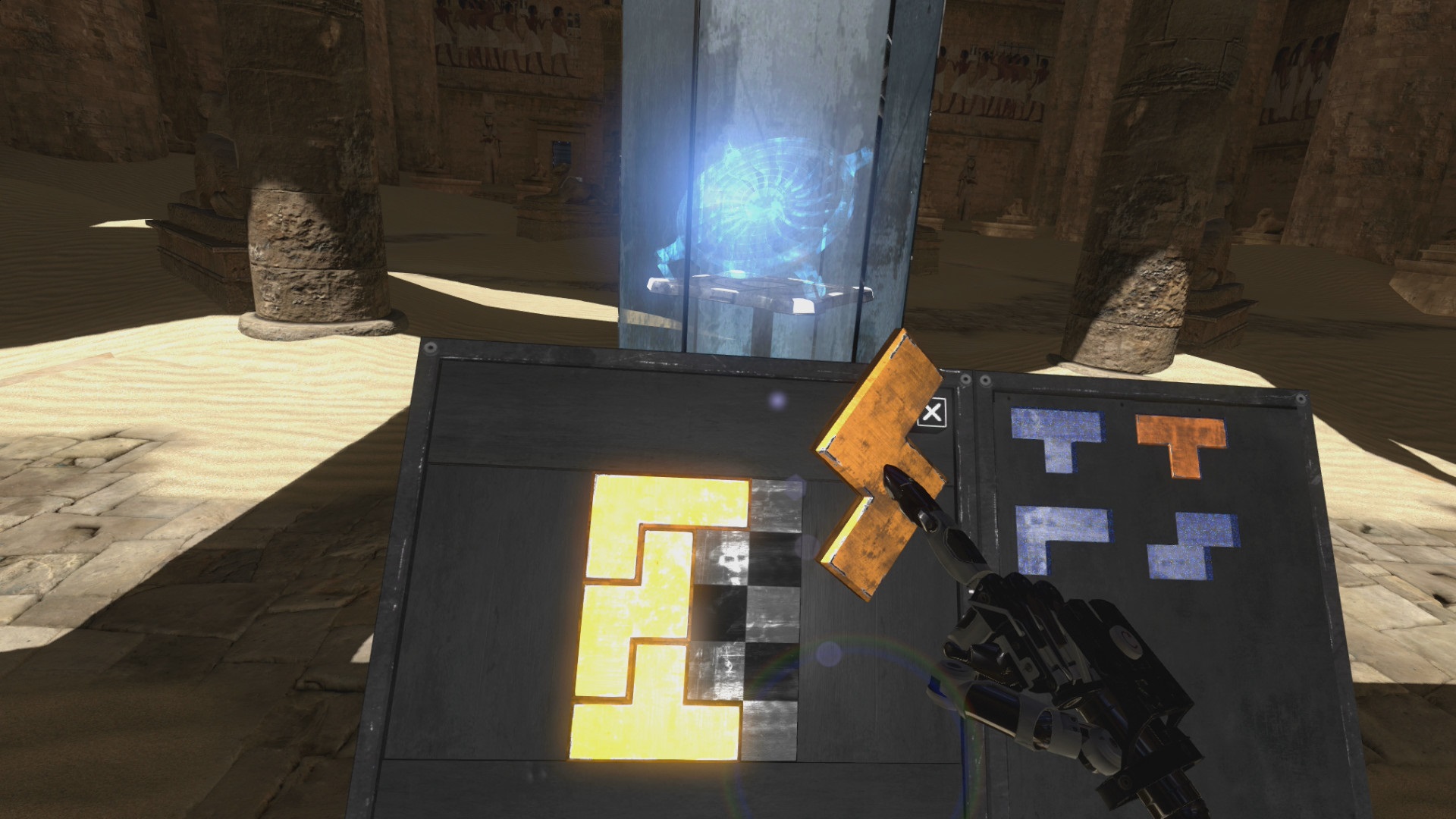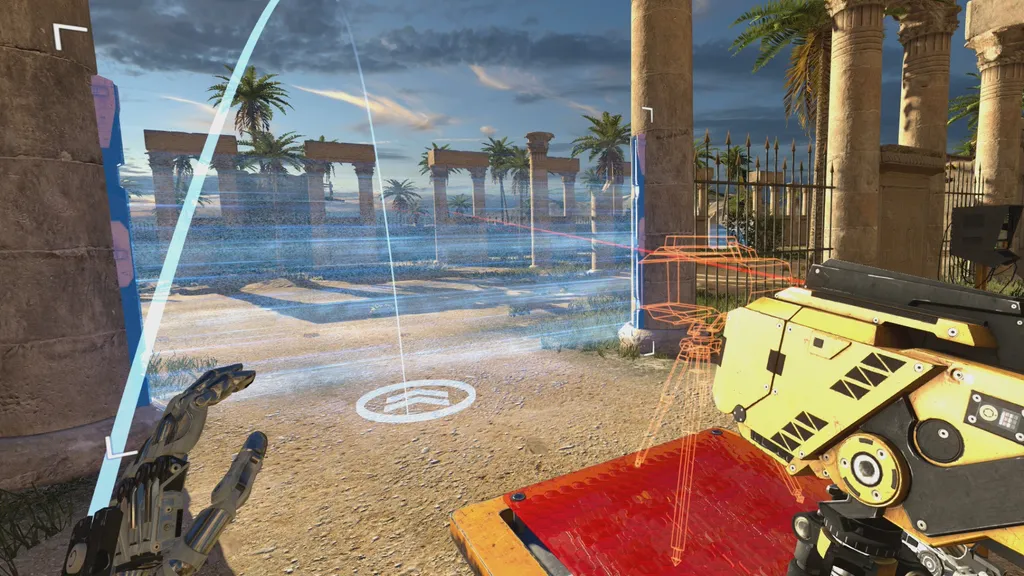Can we just stop for a moment to give Croteam a well-earned pat on the back? In a time when most developers are struggling to commit to VR for good reason, here’s a team that’s not only given us one of the best wave shooters going but two comprehensive ports of its past games, all on Vive and Rift. As if that weren’t enough, it’s now brought over one of the best puzzle games of the last few years to headsets too.
It should be no surprise, then, that The Talos Principle VR is an accomplished translation of the 2014 original into the unwieldy new world of Rift and Vive. Better yet, the game’s considered pacing and mechanics make it a natural fit for the platform and an unmissable puzzle experience, but only if you haven’t played it before.
The Talos Principle casts you as an android that awakens in a mysterious garden with an unseen being calling himself Elohim claiming to be your divine creator. You set about solving challenges he’s laid out for you, which largely involve using turret-like nodes that can disable path-blocking shields, patrolling bombs and motion-sensing machine guns. Eventually, you’ll use these same devices to create circuits between switches, and levels will add additional layers like fans that can shoot you over to inaccessible areas.
Gameplay translates pretty naturally to VR thanks to its simplicity. Using the Vive wands or Touch controllers you can reach out and grab these nodes and then move around the world using one of a vast range of options the developer has supplied (which, again, deserves a pat on the back). The vibrant world around you really shines inside headsets too; this is one of the first VR games in a while that gives you time to stop, breathe and truly appreciate the world around you, with ornaments and objects that really feel like they’re there. Exploring the world of Talos Principle took me back to the DK1 days of the Oculus Rift where you could get simple joy out of just seeing an environment in VR.
That said, headset support is hardly essential to the experience and ultimately I didn’t feel like it was adding enough to warrant a second playthrough of a game I’ve seen through once before. Unlike Resident Evil 7, or even the ports of the Serious Sam games, there are no characters to establish deeper connections with or atmospheric tones that are greatly enhanced by the sense of presence; there’s just pretty stuff to look. If you’re yet to journey through the garden and beyond then you should absolutely be picking up The Talos Principle in VR, but the experience isn’t compelling enough to pull you through a second time unless you really wanted to discover more of the game’s multiple endings, or perhaps haven’t played the Road to Gehenna DLC, which is helpfully included here.
On its own terms, though, it is hard to fault the game’s inventive puzzles, which offer a satisfying mix of challenges just taxing enough to cause pause for thought and then larger, more elaborate trials that it’s possible to get stuck on for a good hour or more. Even across the initial 120+ levels, The Talos Principle never runs out of ways to baffle you, and several puzzles contain even more trying obstacles for hidden stars. It never hits the sheer mechanical ingenuity or innovation of something like Portal, but it’s got a structure and pace that will pull you through without issue.

Croteam has done yet another excellent job of bringing one of its past successes to VR; The Talos Principle feels right at home inside your headset. If you’ve never played the game and have a Rift and Vive then this is absolutely one of the best puzzle games to play in VR right now. If you’ve already wrapped you brain around it once, though, it’s tough to recommend revisiting the game in VR. While comprehensive, the game’s VR support is additive at best, enhancing the experience only in a superficial way. Still the same great game, then, but only worth the trip for some.


























